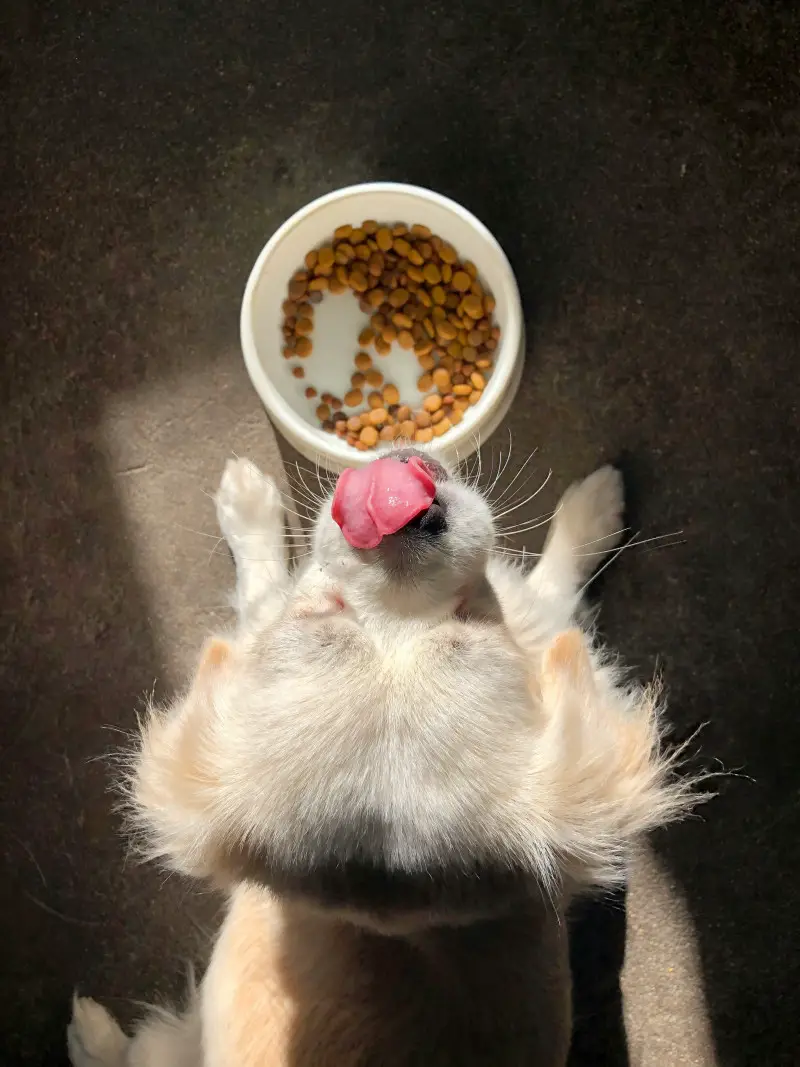The unconditional love that dogs bring into our lives deserves to be reciprocated. One of the primary ways pet owners can express this love is through the care they take in feeding their pups. Chronic health conditions can be prevented and overall wellness can be improved just by optimizing pet meals. Canine mealtime should not only focus on the quality of the food but also the timing.
Choosing the correct feeding schedule is fundamental to maintaining a canine’s optimal health. When the term “feeding schedule” is brought up, it doesn’t just refer to the number of meals per day, but also the timing when those meals are served. Just like with humans, the body metabolism of dogs remains highest during the day and dwindles at night. Thus, understanding their feeding schedule can considerably affect their health, behavior, and overall development. Whether you are a newcomer or an experienced pet owner, it’s never too late to understand and implement the best time to serve fresh dog food to your fur babies.
This then raises the question, what exactly is fresh dog food? While it’s easy to simply provide industrial, processed pet foods to our dogs, we must understand the importance of fresh food in their diet. Fresh dog food typically contains high-quality ingredients that aim to closely mimic a dog’s natural diet. This type of food often utilizes human-grade components, devoid of added preservatives, fillers, or colorings found in many commercial dog foods. Fresh dog food often comprises lean meats, wholesome grains, fruits, and vegetables that maintain their nutritious value since they are minimally processed. Consequently, this offers a wide array of health benefits to your dog that can’t be compared to processed dog foods.
The timing and quality of these meals go hand in hand when optimizing your dog’s health, behavior, and happiness. Curating a balanced diet for our canine friends includes considering the proper time to serve fresh dog food. Each dog is unique, and thus their feeding schedules might vary. However, identifying a routine that suits your pet can make a significant difference in their health and behavior. Serving fresh dog food at the right time ensures that your pet’s daily nutrition needs are met, promoting a healthy metabolism and steady energy levels. Crucially, it can also prevent several diet-related health problems such as obesity, diabetes, gastrointestinal issues, and more.
A better understanding of canine nutritional needs leads to healthier and happier pets. In the following sections, we delve deeper into the importance of feeding fresh dog food at the right time and some suggestions on ideal dog meal times.
Table of Contents
When is the Best Time to Serve Fresh Dog Food to Your Dog?
From their joyous welcomes to their unyielding loyalty, dogs enrich our lives in endless ways. As dedicated pet parents, we return this affection the best we can, with one of the chief ways being through proper and healthy feeding habits. The effects of maintaining proper feeding schedules for dogs, including meal timing and content, reach far and wide. It significantly impacts their overall health, reduces the risk of diet-related illnesses, and directly contributes to their vitality.
Among the components of a dog’s feeding regimen stands the quality of food, namely, fresh dog food. Moving away from processed foods found on the shelves of local supermarkets, fresh dog food embraces a dog’s primitive dietary habits. These items are typically comprised of high-quality, human-grade ingredients, including wholesome proteins, healthy vegetables, and nourishing grains. Fresh dog food comes without preservatives, colorings, and other chemical additives, providing optimal nutrition for your canine companion.
Apart from the quality of the food, another critical factor is identifying the best time to serve fresh dog food. It’s crucial to realize that dogs, like us, have varying digestion and metabolism rates throughout the day. This knowledge significantly influences the effectiveness of their dietary plan. By systematically adjusting their feeding schedules, we can assure regularity and predictability for their bodies, initiating a balanced metabolism, facilitating digestive health, and ensuring they receive all necessary nutrients.
Bearing in mind the unique needs of every dog and understanding that it is not a one-size-fits-all situation, it’s of utmost importance to comprehend the best times to serve fresh meals to our dogs. Paving the way for such healthy practices assures us to see our dogs brimming with energy, sporting glossy coats, and maintaining ideal body weights. So, how can we achieve this? Let’s delve deeper into understanding the importance of dedicated meal timings and making the best nutritional choices for our furry friends in the coming sections.
Ideal meal times for dogs
Setting a premium dog feeding schedule requires a comprehensive understanding of our furry friends’ digestive process, just as serving optimal pet meals needs a grasp on the best times to feed. These elements are crucial to master for providing a balanced, healthy pet feeding routine.
Understanding dog digestion
Dog nutrition timing aligns closely with their digestive system’s capabilities. Comparing a dog’s digestive system with that of a human, there are several stark differences. For one, dogs have a much more robust and shorter digestive tract tailored to processing meat and bones. Their high acid concentration in the stomach speeds up the breakdown process, streamlining the digestion.
Typically, dogs can digest their food within 4-6 hours, a short span compared to approximately 24-hour human digestion. This reflects their history as opportunistic eaters in the wild. They consume large meals quickly and rather sporadically. However, once domesticated and provided with assured meals, their system benefits significantly from regular feeding times, providing a consistent energy supply and promoting a healthy metabolic rate.
Generally accepted meal times for dogs
The freshness of canine mealtime turns a daily obligation into an exciting event for our pets. Many dog owners and nutritionists recommend feeding them early in the morning around 6-7 AM. This coincides with their natural feeding instinct and kick-starts their metabolism for the day, providing the necessary energy for their activities. The science behind afternoon feeding, around 12-1 PM is that it ensures a steady supply of nutrients, easily digestible for their bodies throughout the day.
The reasoning behind late evening feeding around 6-7 PM is to satiate them for the night, supplying lasting nutrients for the slower metabolic processes during sleep. This fresh dog food schedule resembles their ancestral feeding times, contributing to a well-regulated, predictable digestive and excretory system, preventing overnight accidents or morning rushes to the yard.
Adjusting meal times based on dog breed, size, and age
While it’s essential to understand the best dog meal times, an ideal dog food serving schedule accounts for the pet’s breed, size, and age. This is because different breeds have varying energy levels. Active breeds such as Labradors or Boxers require regular meals to maintain their stamina, while laid-back breeds may require less.
Moreover, meal timing and portion sizes are influenced by a dog’s size and age. Puppies have a faster metabolism and thus require more frequent feeding with smaller but nutritious meals as compared to adult dogs. As dogs age, their metabolism slows down, and thus their diet and feeding times need to be adjusted to prevent health issues like obesity. The importance of size cannot be understated as larger breeds require larger portion sizes and vice versa.
Creating a tailored feeding schedule according to a dog’s breed, size, and age can significantly enhance their health and quality of life. Therefore, it is crucial to consider all these factors before setting the high-quality dog diet timing.
Let’s now delve deeper into the specifics of tailoring your dog’s feeding schedule, the difference between feeding puppies, adults, and senior dogs, and the best practices to follow for each category in the forthcoming sections.
Ideal Meal Times for Dogs
When it comes to pet care, it’s important to establish a healthy pet feeding routine, which includes a premium dog feeding schedule and serving optimal pet meals.
Understanding Dog Digestion
The concept of dog nutrition timing greatly depends on their digestive system. Unlike humans, dogs have a shorter and more acidic digestive tract, designed for processing meat and bones. They can digest their food within four to six hours, which is remarkably quicker compared to the 24 to 72 hours a human digestive system requires.
This efficiency in digestion is a result of their ancestral feeding behavior, which involved infrequent and often large meals. Despite their ability to digest food rapidly, it’s critical to provide them with regular feeding times. Regular feeding times allow them to have a continual supply of nutrients and energy throughout the day, promoting better physical health and behavioral development.
Generally Accepted Meal Times for Dogs
Maintaining a fresh dog food schedule is vital for your furry friend’s health. Nutritionists and vets recommend feeding dogs once early in the morning, around 6 AM to 7 AM, and once in the early evening, around 5 PM to 6 PM. These times coincide with a dog’s natural feeding times and ensure they receive a steady supply of energy throughout the day.
An early morning feed helps kickstart their metabolism, supporting their energy needs for the day’s activities. This is the prime time for dog meals as it mimics their natural feeding behavior in the wild. The logic behind an early evening feed is that it provides lasting nutrients during the long gap until the next morning meal. It also helps prevent nighttime hunger and supports slower metabolic processes during sleep.
Adjusting Meal Times Based on Dog Breed, Size, and Age
A dog’s breed, size, and age are crucial determinants in setting the ideal dog food serving time. Different breeds have different energy levels, making the feeding requirements vary. Active breeds may require more frequent meals to sustain their energy, while more relaxed breeds may require less.
Size is another critical factor. Larger dogs usually require larger portions but at fewer meal frequencies, considering they have larger stomach capacities and slower metabolic rates than smaller dogs. Age is equally significant. Puppies have a faster metabolism, requiring frequent but small meals relative to their size for growth and development. As a dog ages, their metabolism slows, and their meal portions and frequencies need to be adjusted to prevent obesity and other health issues.
With that said, it’s imperative to adjust your dog’s feeding schedule based on their individual needs. A highly active, large breed puppy will have very different nutritional needs and interacting with food than a senior, small breed dog that is less active. Let’s delve deeper into the specifics of these differences and how you can set the most appropriate feeding routine for your dog in the context of their age, breed, and size in the following sections.
Examination of Fresh Dog Food
While establishing a high-quality dog diet timing is essential, serving quality meals makes a significant difference. For a pet owner who wants to serve their pooch diet of optimal quality, the choice often falls on fresh dog food.
What Goes Into Fresh Dog Food
Fresh dog food, often homemade or purchased from high-quality dog food brands, includes real, recognizable ingredients. The basis of a healthy pet feeding routine lies in serving real meat as part of a dog’s diet. The importance of such protein is immeasurable as it provides essential amino acids necessary for the growth, maintenance, and repair of body tissues.
Along with the goodness of meat, the role of vegetables and fruits is also undeniable. They contain fibers that help in maintaining gut health, vitamins, and antioxidants that boost the immune system and contribute to overall health. The pet-feeding routine gets an upgrade when organic dog food serving times replace conventional meal times and offer pups a nutrient-rich diet reminiscent of their ancestral diet.
Another consideration in the selection of fresh dog food is the exclusion of harmful additives and preservatives found in many commercially prepared dog food brands. These can have severe consequences on a dog’s long-term health, causing issues ranging from allergies to more severe health conditions.
Health Benefits of Fresh Dog Food
Switching your dog to a fresh food diet can impact their overall health positively.
High nutrient content found in fresh food can significantly affect a dog’s energy levels. Energy derived from quality sources results in sustained vitality as opposed to short energy spikes usually seen with processed foods. Additionally, the role of fresh food in maintaining a healthy weight is indispensable. Natural foods are inherently less calorie-dense but more nutritionally rich, offering satisfaction without overweight risks.
Moreover, fresh food’s influence on the dog’s digestive system is prominent. Vets often assert that a diet comprised of fresh food easily absorbed by the digestive system results in smaller and less frequent stools, an easier-to-maintain weight, and a generally healthier, happier pup.
How to Transition to Fresh Dog Food
If you decide to start serving your pet with healthier, fresh food options, remember that a gradual introduction to the new diet is key. Especially if your dog has been eating commercially prepared food all his life, a sudden change might upset his digestive system. Start by mixing a small amount of fresh food with their customary diet, gradually increasing the fresh food portion over one to two weeks until it completely replaces the old meal.
Crucial to their pet feeding routine is also monitoring and adjusting the diet based on your dog’s response. Look for signs of any adverse effects, like changes in stool consistency, skin allergies, or lethargy. And don’t forget to consult your vet for their optimal feeding times given their age, weight, and breed to ensure that your pet has a smooth transition to their newly established fresh dog food schedule.
As we move forward, we will delve more into the nature of fresh food and understand the significance of serving fresh meals for pets.
Identifying the Best Time to Serve Fresh Dog Food
The guidelines surrounding dog feeding schedules provide excellent starting points. However, it’s also crucial to consider the unique aspects of your pet’s lifestyle and preference when setting their fresh dog food schedule.
Factoring in the Dog’s Lifestyle
Every dog has a unique lifestyle that reflects its breed, age, and personality. A pet’s schedule and activities can widely influence its digestion, thereby affecting the optimal feeding times. Therefore, the key to determining the high-quality dog diet timing is understanding your pet’s routine.
Physical activity plays a substantial role in digestion. For instance, dogs that exercise intensely may benefit from eating smaller meals throughout the day to avoid potential gastrointestinal upset. Observing sleep patterns also provides clues toward ideal feeding times. Dogs, like humans, tend to slow their metabolism and digestion during rest periods.
Consistency is perhaps the most crucial component of a feeding schedule for dogs. Routine feeds allow your pet’s digestive system to predict and prepare for meals, fostering optimal digestion and nutrient absorption. Irregular feeding could result in gastrointestinal problems, like bloating or indigestive issues.
Noticing Your Dog’s Preference
A dog’s preference plays a significant role in setting mealtime. Paying attention to your dog’s natural eating patterns can provide valuable insights. Some dogs may prefer to eat early in the day, while others may show a preference for evening meals. While identifying these preferences, it’s essential to maintain a healthy balance and not overindulge their appetites, potentially leading to weight issues.
Alongside feeding what your pet likes, your schedule also matters. Set meal times according to your schedule, but ensure it doesn’t compromise your pet’s nutrition. Ideally, meals should be spaced evenly and occur at similar times each day, maintaining the dog’s metabolic balance.
The Effects of Feeding Fresh Dog Food at Different Times
It’s important to note the differing effects of feeding your pet in the morning versus the evening. Given that dogs evolved from carnivorous predators, they are naturally inclined to be active during dawn and dusk. Observing this natural tendency, many pet owners decide that these times coincide best with meal times.
Feeding your pet a robust and nutrient-rich meal in the afternoon can help maintain consistent energy levels throughout the day. It can affect their behavioral patterns, causing them to be more active and alert. On the flip side, feeding at night should aim to maintain a steady influx of necessary nutrients during the long gap until morning.
Through trial and observation, you can determine the best dog meal times that align with their natural eating tendencies, physical needs, and daily activities. As we move forward, we will highlight practical ways you can implement these fresh dog food schedules and the impact on your pet’s overall well-being.
Establishing Healthy Feeding Times and Maximizing Benefits from Fresh Dog Food
Optimizing your pet’s feeding schedule harmoniously combines understanding their digestive process, recognizing their unique habits, and a commitment to providing the most nutritious meals at the right time. Indeed, the significance of quality nutrition through regular feeding times cannot be stressed enough for the overall health and well-being of your canine companion.
One of the primary takeaways is that consistency is crucial. Regular feeding times allow your pet’s digestive system to anticipate and prepare for meals effectively. This promotes better digestion and nutrient absorption. So, whether you’re serving meals early in the day or late in the evening, maintaining strict adherence to the chosen feeding times is paramount to your pet’s happiness and health.
Consider your pet’s lifestyle and preferences when setting feeding times. Physical activity, energy levels, and sleep schedules can largely determine the best feeding times. Equally important is to factor in your pet’s breed, age, and size into its feeding schedule. While general guidance can serve as a good starting point, remember that each dog is unique and might require adjustments to common recommendations.
Switching to a fresh food diet can be a game-changer for your pup’s health, leading to a more vibrant coat, increased energy levels, and overall improved health. Fresh foods are rich in nutrients and low in preservatives, additives, making them an excellent choice for any pet parent wanting to offer their dog the best.
Lastly, remember to embrace patience and consistency when adopting a new feeding schedule or diet. Changes may not always be immediately visible, but they often have profound long-term effects. Over time, picking up on your dog’s behavioral cues paired with your newfound understanding of their digestive process will result in the perfect customization of their feedings —a ‘tail’-ored diet and routine that satisfies their tastes and nourishes their bodies.
With the right approach, identifying the prime time for dog meals not only fuels their bodies but also mitigates health risks, ensuring that your furry companions are not merely surviving, but indeed, thriving.




